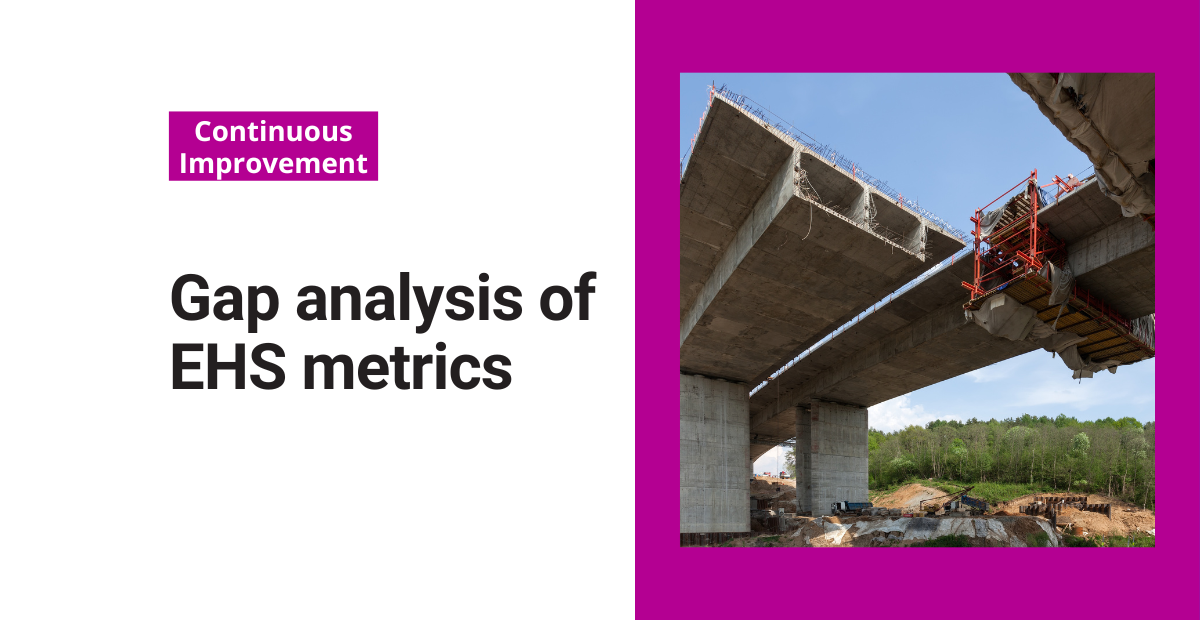Conducting a gap analysis of safety measures can be crucial in high-risk industries. In these sectors, the cost of a safety incident can be disastrous for the financial health of a company. And so, the importance of setting safety-related goals has multiple indications for long-term success.
You may have considered performing a gap analysis focusing on financial goals. However, the principles underlying this technique can be used to assess other areas of performance as well. When it comes to incident prevention, a gap analysis of EHS metrics can have a positive impact on the success of your efforts.
Basics of completing a gap analysis
Business leaders often use the term “gap” to describe the metaphorical space between the current state of things and a desired goal. In other words, a gap is anything yet to do before you can reach your goals. A thorough gap analysis of these gaps can help in creating strategies to overcome them.
To better understand how to get from point A to point B, businesses perform a gap analysis focusing on each goal. This involves a few key steps:
- Clearly define an objective you want to meet.
- Assess the current state of your progress towards that objective.
- Benchmark your current state against a desired outcome.
- Decide if there’s a gap between your current state and your established goal.
- Determine corrective actions to reach the goal at (or before) your deadline.
As with any type of goal setting, gap analyses are more effective when they’re measurable. But in the field of health and safety, it’s sometimes difficult to quantify goals. That’s why a detailed gap analysis focused on specific metrics is important in identifying objectives.
The easiest approach is to use EHS metrics in step one, defining your overall objective. Then, use a mixture of qualitative and quantitative goals in step three. This will direct your entire operation towards an EHS metric-driven outcome.
EHS example
If you need help getting started, consider this example of how you can use gap analysis to improve your site’s EHS performance.
Here’s the scenario:
You work in a warehouse that manufactures consumer goods. Lately, you’ve observed that foot injuries are the most common type of recordable injury across all departments. Therefore, to lower your site’s Total Recordable Incident Rate (TRIR), you’ve decided to focus on reducing the number of foot injuries.
To begin, follow the gap analysis process step by step.
Step 1: Define your objective
First, reduce foot-related safety incidents by launching a safety shoe voucher program. Next, set a clear target: lower the site’s TRIR to 3.0 by the end of the year. Finally, analyze specific incidents that contributed to the current injury rate to guide your improvements.
Step 2: Assess the current state.
346 employees are enrolled in the program.
Step 3: State the desired outcome.
Get 500 employees to enroll in the program.
Step 4: Decide if a gap exists.
There is a gap—we need 154 more employees to enroll in the program.
Step 5: Determine corrective action to take.
Have all managers engage employees one on one regarding the shoe program, ensuring it is part of the gap analysis process.
If you want a simple way to document, use this free Excel template which includes the information from the above example:
Free template!
Use this gap analysis template to review different areas of your operation for efficiency.
Through this example, it’s easy to see how a gap analysis driven by EHS metrics can help you create a safer workplace.
But it’s also easy to see that this process alone won’t ensure you reach your goals. It’s simply a method to identify where you are, where you want to be, and how you can get there through the gap analysis of objectives.




